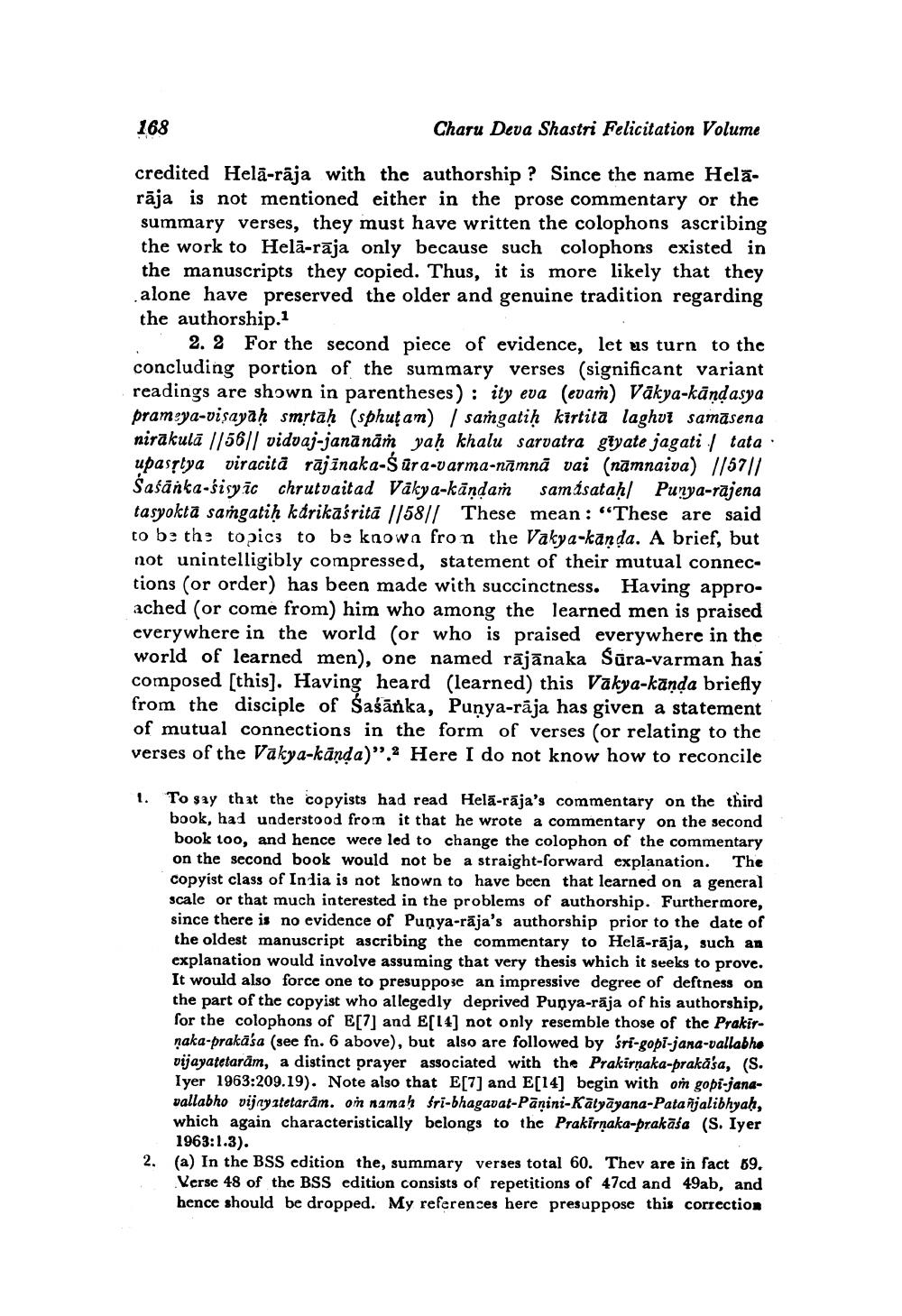Book Title: Authorship Of Vakya Kanda Tika Author(s): Ashok Aklujkar Publisher: Ashok Aklujkar View full book textPage 4
________________ 168 Charu Deva Shastri Felicitation Volume credited Helā-rāja with the authorship ? Since the name Helarāja is not mentioned either in the prose commentary or the summary verses, they must have written the colophons ascribing the work to Helā-rāja only because such colophons existed in the manuscripts they copied. Thus, it is more likely that they alone have preserved the older and genuine tradition regarding the authorship.1 2. 2 For the second piece of evidence, let us turn to the concluding portion of the summary verses (significant variant readings are shown in parentheses) : ity eva (evam) Vākya-kāndasya prameya-visayaḥ smrtāḥ (sphutam) | samgatih kirtita laghui samasena nirakulā ||56|| vidvaj-janānāṁ yaḥ khalu sarvatra głyаte jagati / tata upasstya viracitā rājinaka-Śūra-varma-nāmnā vai (nämnaiva) 1/57|| Šaśānka-śisy īc chrutvaitad Váky a-kāndam samásataḥ| Punya-rājena tasyokta sangatih karikasritā ||58|| These mean: “These are said to be the topics to be known fron the Vakya-kanda. A brief, but not unintelligibly compressed, statement of their mutual connections (or order) has been made with succinctness. Having approached (or come from) him who among the learned men is praised everywhere in the world (or who is praised everywhere in the world of learned men), one named rājānaka Sūra-varman has composed [this]. Having heard (learned) this Vakya-kända briefly from the disciple of Śaśānka, Punya-raja has given a statement of mutual connections in the form of verses (or relating to the verses of the Vakya-kända)”.2 Here I do not know how to reconcile 1. To say that the copyists had read Helā-rāja's commentary on the third book, had understood from it that he wrote a commentary on the second book too, and hence were led to change the colophon of the commentary on the second book would not be a straight-forward explanation. The copyist class of India is not known to have been that learned on a general scale or that much interested in the problems of authorship. Furthermore, since there is no evidence of Punya-rāja's authorship prior to the date of the oldest manuscript ascribing the commentary to Helā-rāja, such an explanation would involve assuming that very thesis which it seeks to prove. It would also force one to presuppose an impressive degree of deftness on the part of the copyist who allegedly deprived Punya-raja of his authorship, for the colophons of E[7] and E[14] not only resemble those of the Prakirnaka-prakasa (see fn. 6 above), but also are followed by śri-gopi-jana-vallabha vijayatetaräm, a distinct prayer associated with the Prakirnaka-praka'sa, (S. Iyer 1963:209.19). Note also that E[7] and E[14] begin with om gopi-janavallabho vijayatetaram. om namah fri-bhagavat-Pāṇini-Kālyāyana-Patanjalibhyah, which again characteristically belongs to the Prakirņaka-prakāśa (S. Iyer 1963:1.3). (a) In the BSS edition the, summary verses total 60. Thev are in fact 69. Verse 48 of the BSS edition consists of repetitions of 47cd and 49ab, and hence should be dropped. My references here presuppose this correction 2.Page Navigation
1 2 3 4 5 6 7 8 9 10 11 12 13 14 15 16 17 18 19 20 21 22 23 24
